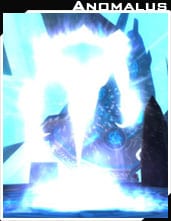
It is well known by all (and if not, the vast majority) that Blizzard draws a lot from the contexts o gag's of the WoW world in curiosities external to the game, such as other Blizzard games such as Diablo or Starcraft, the world of TV or cinema, music, etc. Well, today we will talk about Chaos theory, achievement, mathematical and physical theory that I will explain below:
The achievement:
The achievement consists of, defeat anomaly en The nexus (heroic) without destroying any leak. A very complicated achievement for those who are not very familiar with the theory behind this achievement, or for those with little equipment; D
Chaos theory:
Chaos theory is a well-known concept in mathematics and physics where it deals with certain types of behaviors, of course, unpredictable dynamical systems.
Un dynamic system It is a complex system that presents a change or evolution of its state over time. The behavior in said state can be characterized by determining the limits of the system, the elements and their relationships. In this way, models can be developed that seek to represent the structure of the same system. Dynamic systems can be basically classified into:
- Stable: tends over time to a point, or orbit, according to its dimension (attractor)
- Unstable: which escapes from attractors.
- Chaotic: manifests the two previous behaviors. On the one hand, there is an attractor by which the system is attracted, but at the same time, there are "forces" that push it away from it. In this way, the system remains confined to an area of its state space, but without tending towards a fixed attractor.
Note: Un attractor it is the set to which the system evolves after a long enough time. For the set to be an attractor, the trajectories that are sufficiently close to it must remain close even if they are slightly disturbed. Geometrically, an attractor can be a point, a curve, a manifold, or even a complicated set of fractal structure known as a strange attractor. The description of attractors of chaotic dynamical systems has been one of the great achievements of chaos theory.
The trajectory of the dynamical system in the attractor does not have to satisfy any special property except that of staying in the attractor; it can be periodic, chaotic, or of any other kind.
One of the greatest characteristics of an unstable system is that it has a great dependence on the initial conditions. From a system whose characteristic equations are known, and with fixed initial conditions, its evolution over time can be known exactly. But in the case of chaotic systems, a slight difference in those conditions makes the system evolve in a totally different way. Examples of such systems include the Earth's atmosphere, the Solar System, plate tectonics, turbulent fluids, and population growth.
In order to classify the behavior of a system as chaotic, the system must have the following properties:
- It must be sensitive to initial conditions.
- It must be transitive.
- Their periodic orbits must form a dense set in a compact region of physical space.
Sensitivity to initial conditions means that two points in such a system can move on very different trajectories in their phase space even if the difference in their initial configurations is very small.
For the uninitiated in mathematics, the name "Chaos Theory" can be misleading for two reasons:
- It is not necessarily a theory but can be understood as a large open field of research, encompassing different lines of thought.
- Chaos it is understood not as an absence of order, but as a certain type of order of unpredictable characteristics, but describable in a concrete and precise way. That is to say: an unpredictable type of order of movement.
Applying the theory to achievement:
Chaos theory tells us that it is about the different types of dynamic behaviors, that is, Stable, Unstable and finally Chaotic, whose evolution depends on the time that passes from when we start the Stable system, until the Chaotic system. In achievement, it is almost inevitable to reach Chaotic behavior during combat, and this is where the whole theory is reflected, which tells us:
Chaotic: manifests the two previous behaviors. On the one hand, there is an attractor by which the system is attracted (in our case, the tank), but at the same time, there are "forces" that keep him away from it.. In that way, the system remains confined to an area of its state space, but without tending to a fixed attractor.
In practice, for all of us to understand, it is that, as I explained before, the tank acts as an attractor, that is, a point where all the faults will center their chaotic damage. The longer the time that elapses from the Steady state, the greater the final chaos. In short, the longer it takes you to kill them, the greater the probability of failing the achievement, due to certain death.
PD: I have taken a bit of information from some wikis and so on, to simplify the explanation.